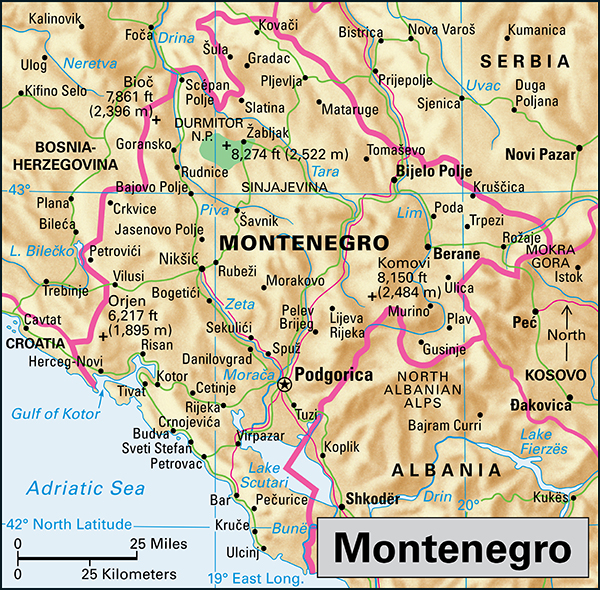Podgorica, << PAWD guh `reet` suh >> (pop. 117,875), is the capital and largest city of Montenegro. Podgorica lies in a fertile plain in southeastern Montenegro, near the junction of the Morava and Zeta rivers. Podgorica’s cultural institutions include a university, a theater, a museum of art, and a sports center. Metal works in the city produce aluminum.

Romans built a castle on the site of Podgorica in A.D. 518, and a town grew up around it. Slavic tribes settled in the area in the 600’s and called the town Ribnica. The town was renamed Podgorica in 1326. In 1474, it fell to the Ottoman Empire, which ruled Montenegro until the late 1800’s. The Kingdom of the Serbs, Croats, and Slovenes formed in 1918. The kingdom later became Yugoslavia, with Montenegro as one of its six republics.
Much of Podgorica was destroyed during World War II (1939-1945). In 1946, Podgorica was renamed Titograd in honor of the Yugoslav leader Josip Broz Tito. An earthquake in 1979 caused widespread damage. Yugoslavia broke up in the early 1990’s, and Montenegro and Serbia formed a new Yugoslavia. Titograd was renamed Podgorica in 1992. In 2003, Yugoslavia changed its name to Serbia and Montenegro. In 2006, Serbia and Montenegro separated and became independent countries.
See also Montenegro .
